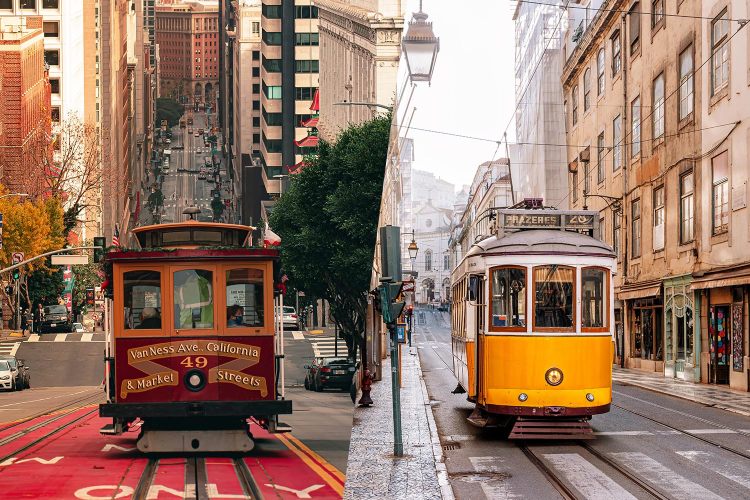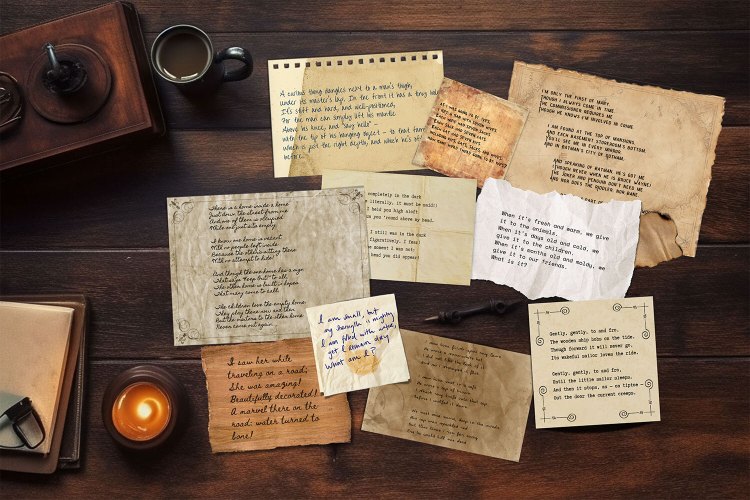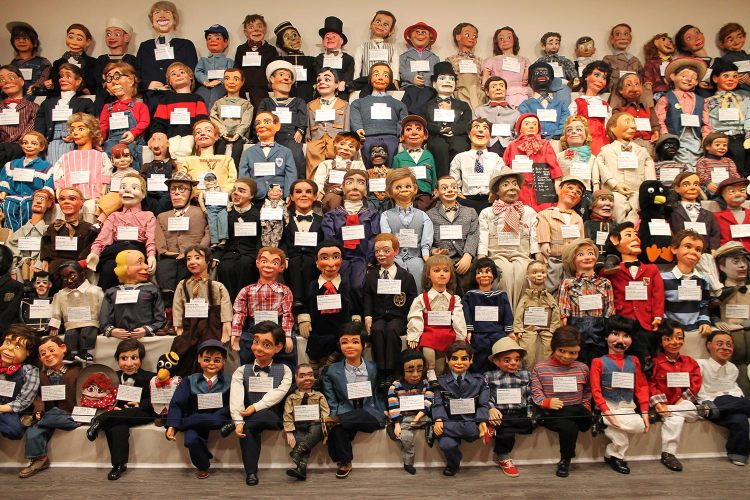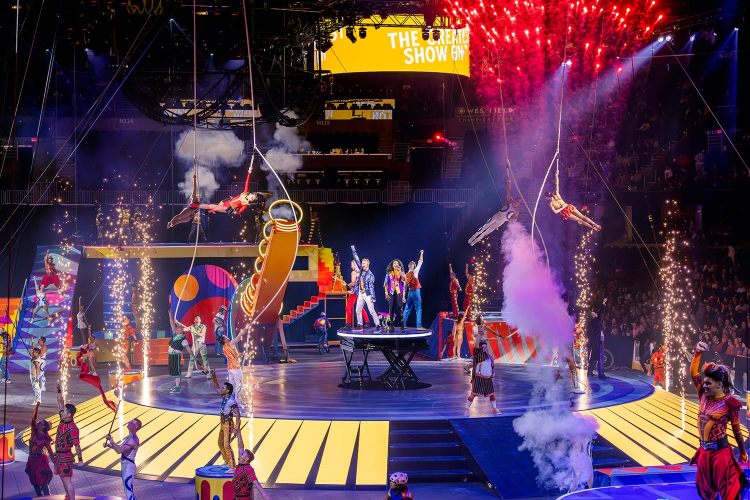An Interview with Punchdrunk Directors Sir Felix Barrett and Maxine Doyle
A Q&A with the creative duo behind hit immersive experiences like Sleep No More
It’s been called the world’s best immersive theatre company. Founded back in 2000, Punchdrunk is the group of geniuses behind the long-running interactive experience Sleep No More , in which visitors don a mask and spend hours wandering a mysterious warehouse (and drink a cocktail or two). I chatted with the two directors. Enjoy.
NEIL PATRICK HARRIS: Thank you for both taking the time for this interview, and for continuing to be awesome. First question: How would you describe immersive theatre to a novice? Say, someone who has just bought you a round of drinks at a pub? [Note: Henceforth, we will use the British theatre to refer to the art form, and the American theater to refer to the physical space in which it takes place.]
FELIX BARRETT: It’s like being inside a movie where you are both director and lead star.
MAXINE DOYLE: It’s something that you are literally inside of. It happens all around you … it has no front, often there’s no conventional seating. At its best, it is an assault on your senses.
That’s brilliant. You are both blazers of trails and at the forefront of the art — what is your origin story? Was there an event or a catalyst that sharpened your focus in this direction? And please, do not say diaper commercials.
FB: Oh my gosh. On one hand I’ve got this highbrow moment seeing a sort of installation by Robert Wilson, the theatre director, when I was 15 — it was the most profound poetic experience. And on the other hand, I saw Cats when I was seven, and the experience was very influential.
Say what you will about Cats, but its design was very experiential! The set was all around you, and the cats came up the aisles, which seemed rare at the time.
FB: Completely. Our seats were at the very back of the theater, and I was expecting to see people in really bad cat outfits on the stage in the distance. But during the performance, the performers were running behind me and one of them touched my shoulder … it broke the wall between us, and it was probably that touch that set me on this journey.
MD: I also have two main reference points. I got into dance through a brilliant teacher at school and when I was 14. We saw a performance from a company called Phoenix in a tiny theater in Liverpool. It was a really physical duet between two men and they were very, very close to me — so close that I could almost smell them. And I just loved it.
And then just before I started working with Felix in 2002, I saw a production of Macbeth in the Sydney festival by La Fura dels Baus, a Spanish company. And it was all over the place. It was a gruesome production … there were chainsaws, blood and guts, all around me. And it was brilliant.
You had me at chainsaws. Yeah, I find that anti-structure so important. The typical theater experience of having your ticket taken, finding your seat, and passively sitting back to watch something unfold on the stage for three hours can often become rote.
FB: I completely agree. It’s almost like the repetitive formula of it means theatergoers switch off most of their brains — they couldn’t be more passive. What we are excited about is trying to create the very opposite, where you are present, physically engaged, having to make active decisions that you live by — it’s almost fight or flight, adrenaline-fueled — and when it works, you are in the moment like nothing else.
I’m so intrigued about the designing of in-the-moment decision making. They need to feel spontaneous, yet be properly engineered. In a Choose Your Own Adventure book, you get to the end of the page and have two options: Do you run or do you hide? But in immersive theatre, there are potentially four or five other options. Do you engage? Do you fight? Do you cry? Is deciding how these decisions will seem spontaneous part of your process?
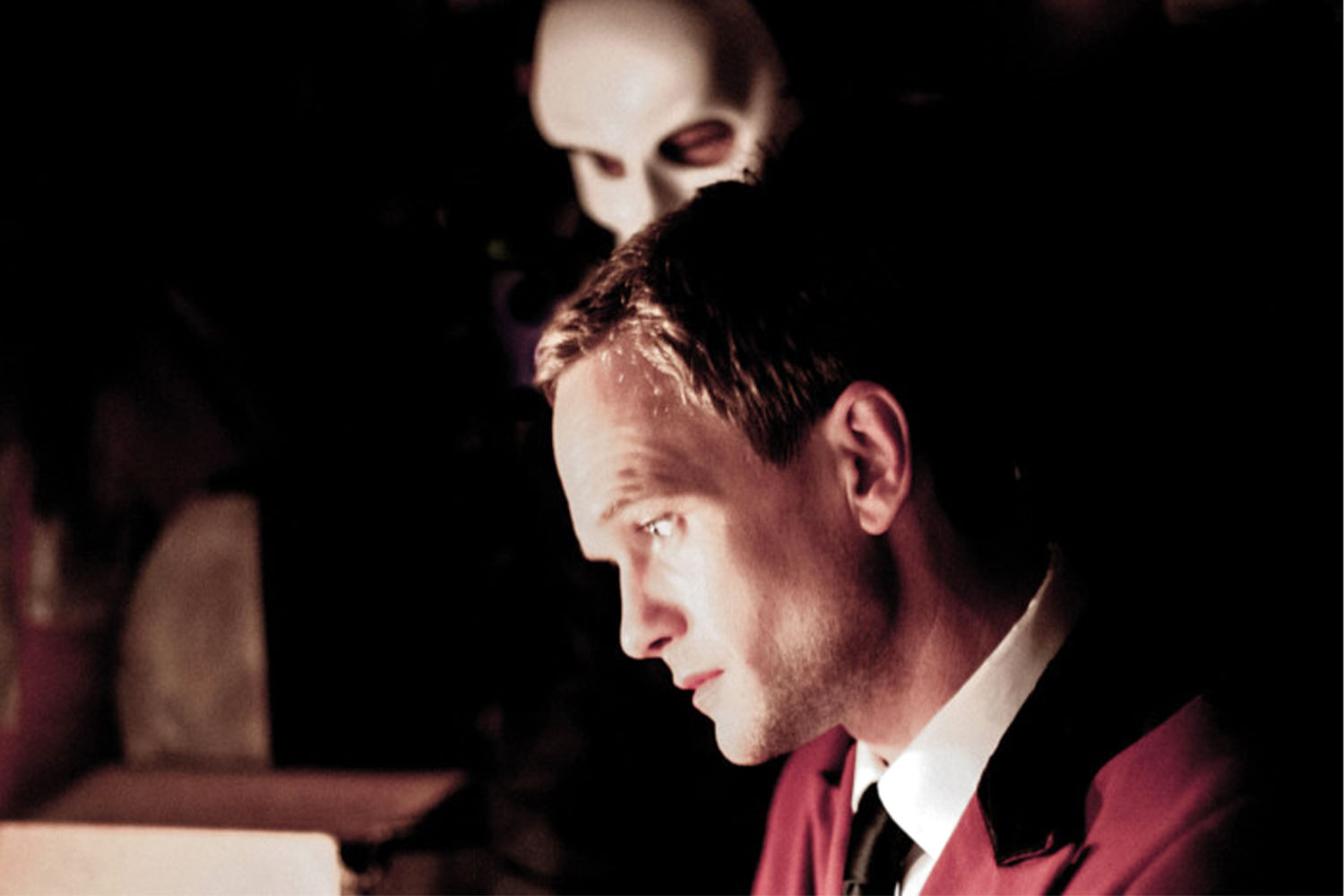
FB: Yes, the fact is that even though it feels improvised and feels dangerous and feels spontaneous, it has to be methodically, absolutely pinpoint choreographed.
With building-based shows like Sleep No More, you’re limited by the architectural footprint. Every show we do, we try so hard to make it as deep as it is long — so that you can follow the main narrative and see it as Shakespeare wrote it, but you can also deep dive into the Porter and uncover a whole story that we’ve created. Currently here in London, we’re planning the fall of Troy, but we’re limited by the practical side to it.
Yes, one often has that problem when planning the fall of Troy…
FB: It’s The Burnt City, our largest show to date. It’s the two plays in the Greek canon that make up the fall of Troy: Hecuba and Agamemnon. We’re telling the story of that fated battle across two vast buildings in East London, through the lens of a futuristic, noir dystopia.
We’re building two cities and you toss a coin to decide which one you start in. Greece is decimated by war. They’ve lost everything. Whereas Troy is a thriving metropolis and cultural melting pot. Even though it’s under siege, it couldn’t be more vibrant.
That’s brilliant! Brilliant, but crazy — determining who goes where based on a coin toss seems to be a 50/50 chance but in point of fact, it won’t wind up that 50%. Some nights 85% of the people will go one way.
FB: Right. It may appear to be 50/50, but there’s a behind-the-scenes control of the audience that is such a huge part of what we do. And when they don’t notice, it’s just a thing of wonder.
The magician in me loves that answer so much.
MD: Individual human beings, having different desires, different needs and different interests … What we try to do — without cheapening or compromising the art — is think, How many courses can we serve? I have friends who just come looking for the dance. Others will follow somebody whom they’re intrigued by. Or they’ll follow a smell, or just go sit in the bar and drink.
I love that. It would seem challenging as creators to value all of the different types of people who want different types of experiences. If you’ve worked really hard to create a narrative that’s based in history or dramaturgical importance, and then someone wants to just watch people make out in a bathroom, you have to honor them. But at the same time, you must kind of wish that they’d have had a more heightened experience.
MD: In the best way, I think we’re quite trashy people. We’ve got low taste and really, really high taste. We want the spectrum. We do want to sit in a bar and have a really good Negroni and hear some brilliant music, and some nights we want to see beautiful dancing that breaks our hearts—
FB: —and over the years, we’ve noticed that audiences divide into three types of experience. They follow the narrative, they’re led by the space, or they want the cocktail and the band. And knowing that, we divide up and rehearse three different shows.
MD: Or there’s the audience who want all of that and come back again and again.
With the return of Sleep No More in New York, can you speak to its lasting success? What made and still makes it such a phenomenon?
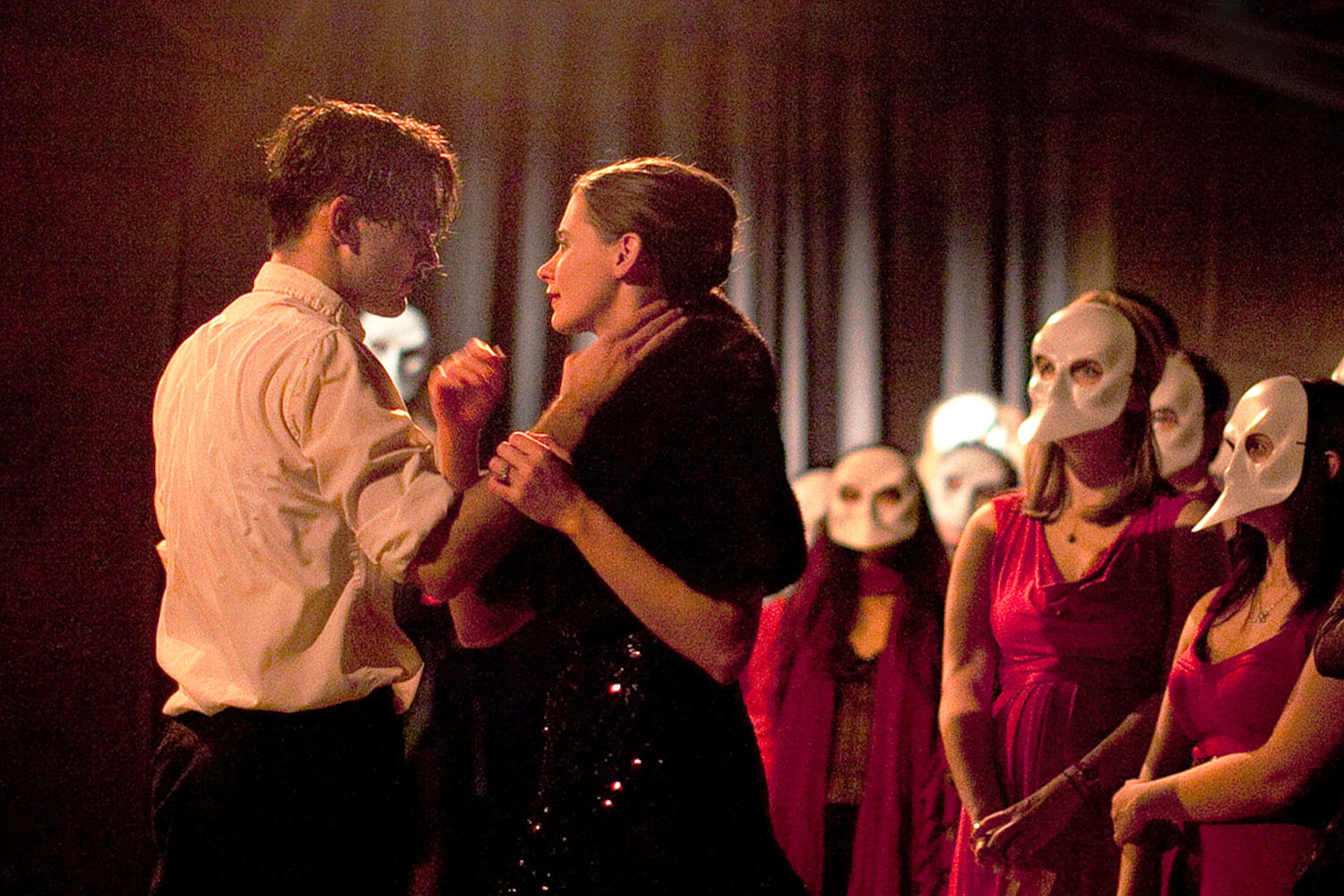
FB: It’s not us! It’s Shakespeare and the humanity at the core of it.
MD: I think it’s a testament to the people. Those on the inside of Sleep No More genuinely fall in love with the show and want to protect it. They want to leave their footprint and pass it on to the next generation.
People have such disparate experiences when they see it, depending on which performers are inhabiting the roles, which path they take, what the energy is. That alchemy is so intoxicating.
FB: We couldn’t agree more.
I’m so inspired by you both — in your abilities to conceptualize and actualize. You’re great magicians. I have inserted myself into the world of Sleep No More in New York as much as I’m able to, and even still, I just have no sense of how it all actually works.
MD: The performers are the true magicians. We might run a dress rehearsal and people miss the timing of their scene and they’ll work out that they’ve now got four minutes to wait and so they become magicians, because then they create a new scene. They start to create the language or create an event. So it’s super collaborative…
If that happens, do you say, “That’s great, let’s try and replicate that!” and add that to the show?
FB: Absolutely. With our new show, we’ve mapped out every character and every scene — it’s here behind us on the wall here in our office [Neil Note: It is, and it’s a glorious web of hand-scrawled note cards taped to a white board, like an FBI investigation of a theatrical serial killer, and we’re not sharing a photo of it, lest we rob Troy-goers of the magic] — then we press “Go” and run them simultaneously. And they all bump into each other moving between rooms, which creates a whole ‘nother 12 layers of scenes.
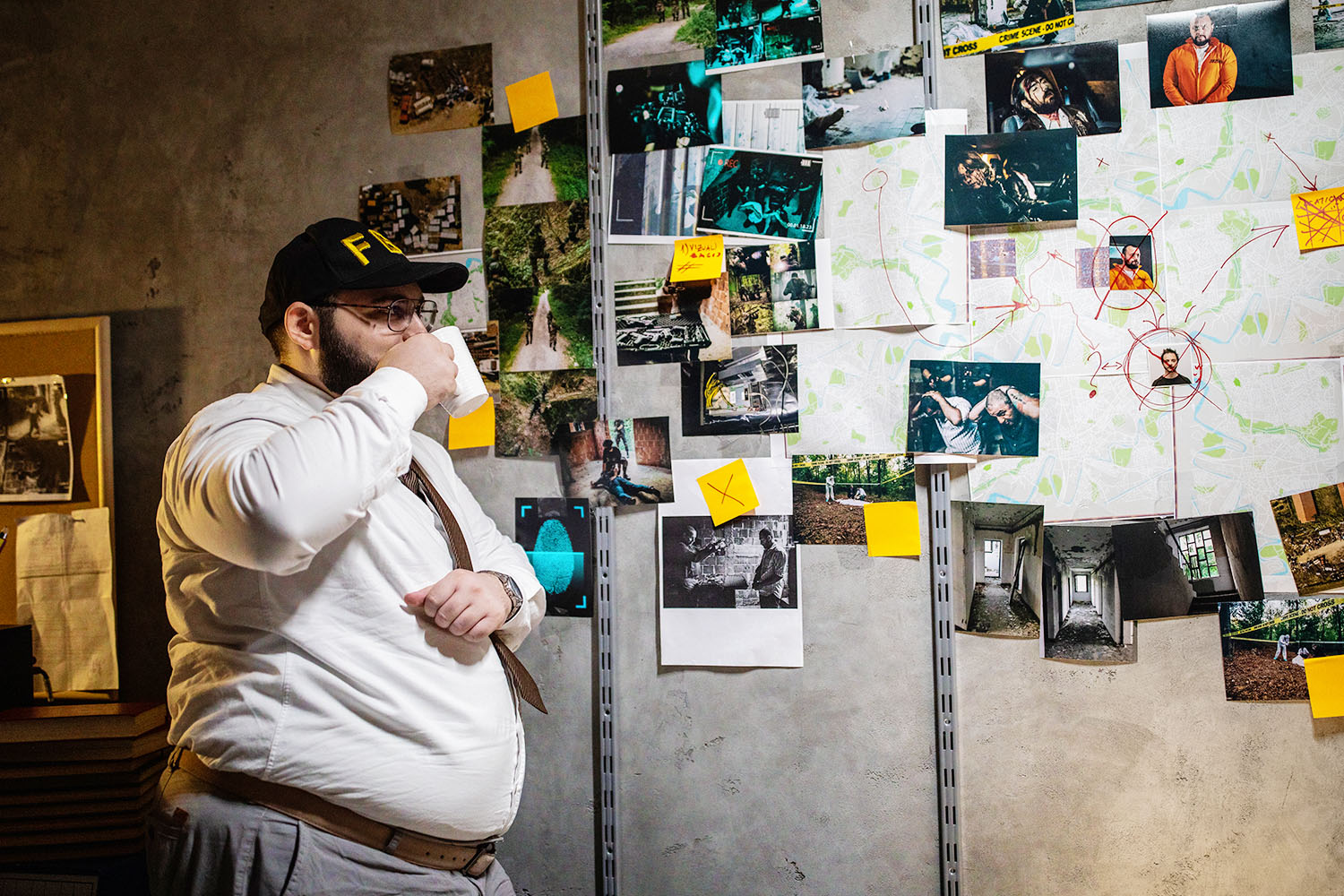
The pandemic has affected so much. But immersion in a unique way — it is, by design, engagement. And the nature of social distancing implies six feet of separation and in the case of Sleep No More, a new hesitation to open drawers, look at letters, be thrust into a phone booth for an intimate experience with someone. So are you taking all of that into account with your forthcoming work, or just hoping that herd immunity helps normalize things?
MD: We’ve made some shifts for the reopening of Sleep No More. There are still some one-on-ones, but we’ve made lots of new, distanced content for this transition period. The show still feels full, and we’re hopeful that people will want to be together and have shared experiences.
FB: You can still have a personal experience, an intimate moment with someone at a distance. It’s going to really reinforce the power of eye contact.
Holy hell, those two are amazing. And inspiring. And have charming British accents, which are hard to convey in an email. Our chat left me more excited and inspired than ever, and I wanted to participate, post-haste.
Luckily, Sleep No More has just re-opened here in New York City, at the McKittrick Hotel, a mere few blocks from Wondercade HQ. Eager to learn more about how the show has adapted for these COVID times, I reached out to Carrie Boyd, Head of Performance & Production at the McKittrick, and Jonathan Hochwald, Lead Producer of SNM and a principal at Emursive, an experiential theatre company.
Carrie, how have pandemic times changed the McKittrick’s production of Sleep No More?
CARRIE BOYD: Pandemic times have changed the work in its essence very little. The adaptations lie in hundreds of small adjustments that allow the original intentions to stay forefront, with only the keenest eyes likely to spot the safety modifications that have been made.
Is there something specific you can reveal?
CB: Sure! The team has found beautiful ways of creating the sense of one-to-one viewership while using spaces in new ways, such as the padded cell where one guest can be given a voyeuristic exchange through the viewing panel on the door. They can maintain a physical distance while still creating intimacy through a controlled perspective.
Jonathan, why go see it now?
JONATHAN HOCHWALD: We are all navigating through the same human themes that Shakespeare captured more than 400 years ago in Macbeth — the thirst for power and its trappings and the sacrifice of morals and ethics to gain or hold onto it; destiny versus freewill; the feeling of living in a world turned upside down. Visitors to Sleep No More experience these themes from the inside out, and after two years in hibernation, the effect feels somehow even more urgent and visceral. Sleep No More is a living, breathing organism which continues to evolve in the hands of our brilliant team of makers and our extraordinary cast. It is a one-of-a-kind artwork that embodies why we live in or visit New York. There has never been a better time to explore the halls and dreamscapes of the McKittrick Hotel reborn!
I encourage you to get your tickets soon. I most certainly did. Hopefully I’ll see you there, wandering the cemetery, observing the sanitorium, or exploring the apothecary. Please do say hello, I’ll be the guy wearing the mask. Oh, umm, wait …
Most Popular
Recommended
Suggested for you


